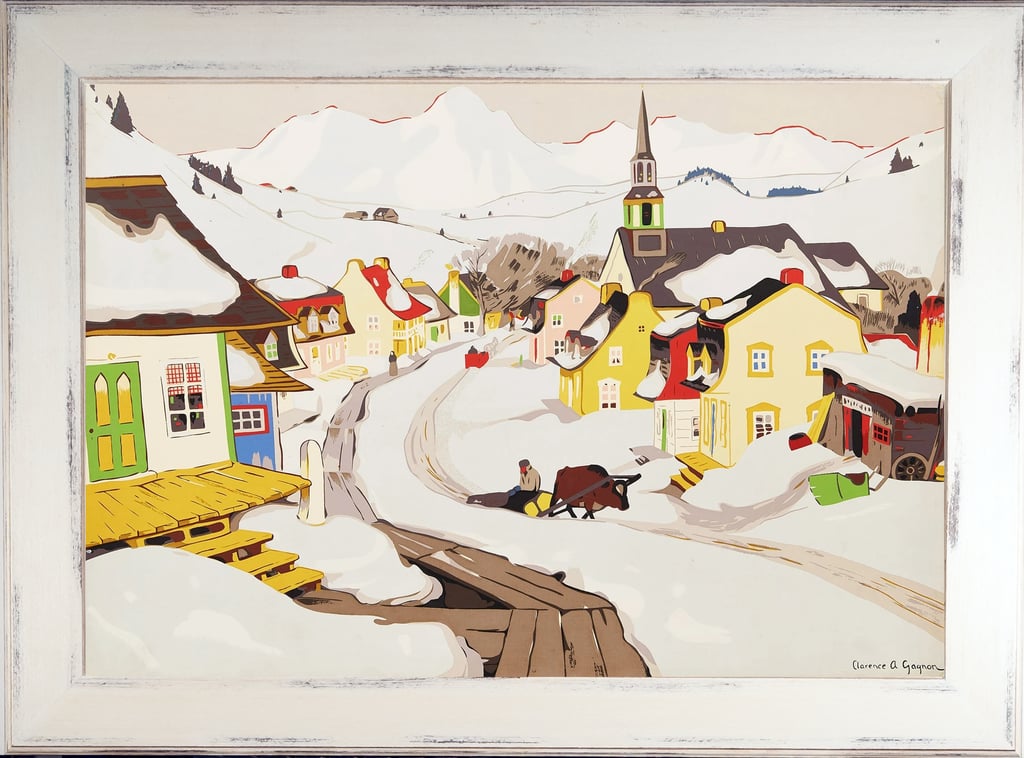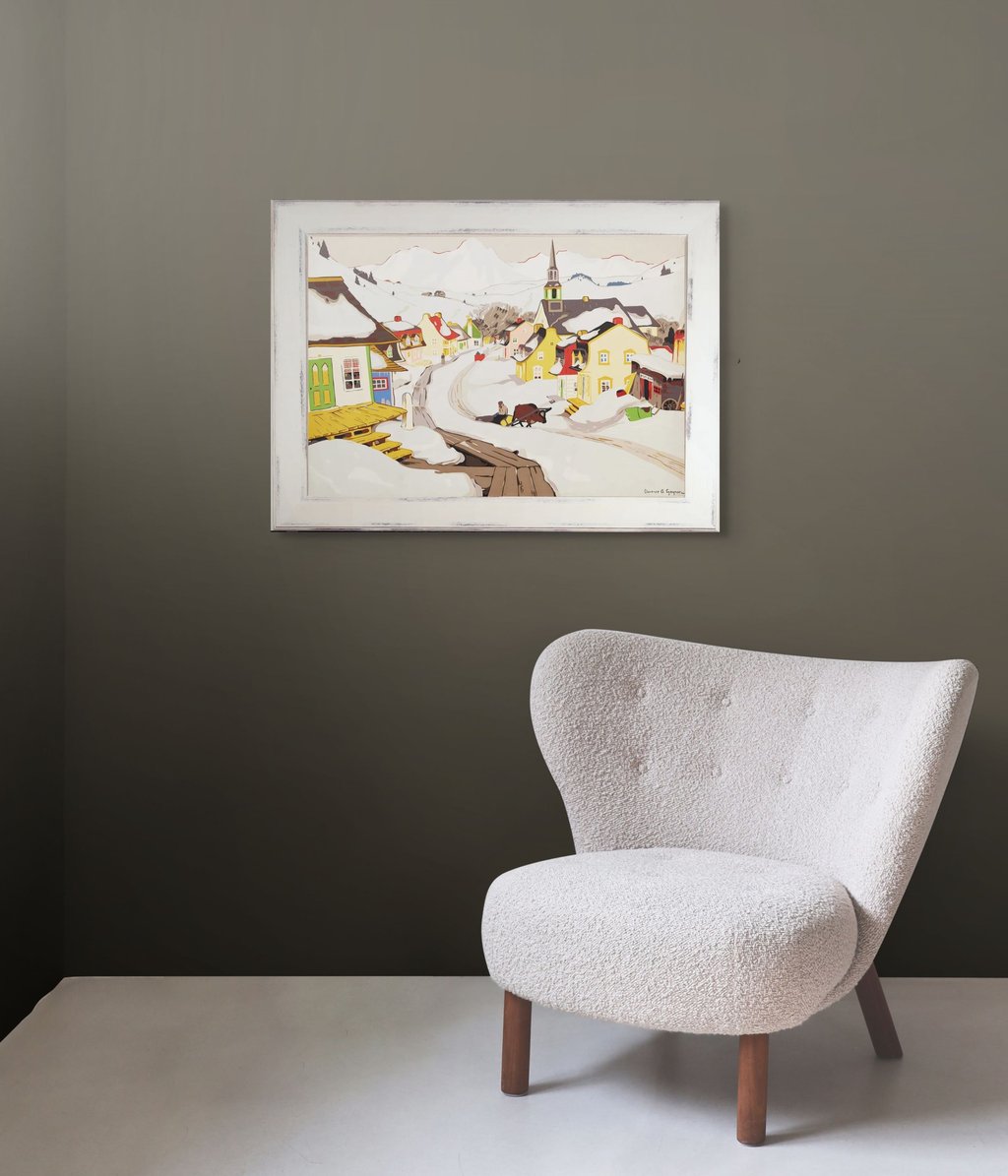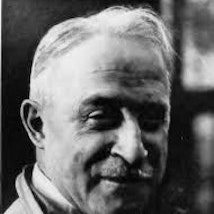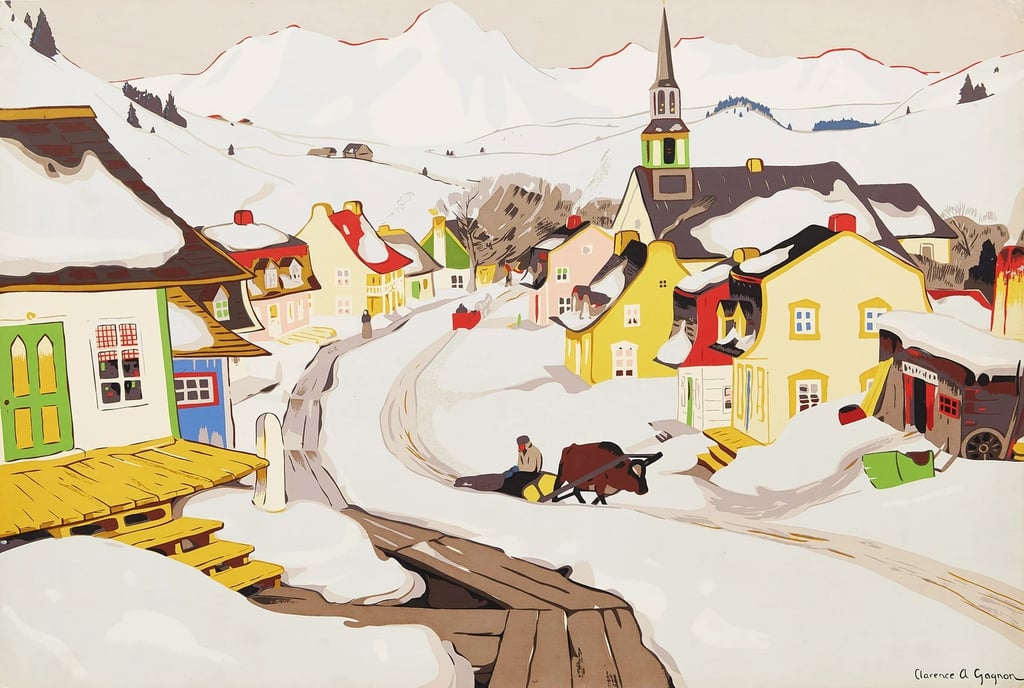Village in the Laurentians
25 x 34 x 1.25 in (63.5 x 86.4 x 3.2 cm) including frame
The Sampson-Matthews print program was the largest public art project in Canadian history. Launched at the start of the Second World War, it lasted twenty-two years and cost tens of millions of dollars in today’s currency. At its height, it employed many of the country’s best commercial painters, designers and artists, working full-time to create masterpieces of serigraphy.


Clarence Gagnon

Clarence Alphonse Gagnon was born on November 8, 1881, in Montreal, Quebec, the son of Alphonse-Edmond Gagnon, a merchant and milling manager, and Sarah Ann Willford, a cultured English mother interested in literature. Part of his childhood was spent in Sainte-Rose, a village north of Montreal, where his family enjoyed a comfortable lifestyle. His artistic talent emerged early when he won his first art competition at age eight. Despite his father's desire for him to pursue business, his mother encouraged his interest in drawing and painting. After completing his studies at the Académie du Plateau in Montreal in 1898, where he was honored with awards for excellence and English language achievement, Gagnon refused his father's business plans and enrolled in free evening classes at the Council of Arts and Manufactures.
In 1897, Gagnon began studying with William Brymner at the Art Association of Montreal, where he remained until 1903. Brymner provided rigorous instruction based on studying plaster casts, live subjects, copying masters' works, and painting outdoors, while encouraging students to explore individual vision and formal innovations. During his studies, Gagnon was exposed to Japanese art and had a decisive encounter with painter Horatio Walker, whose Barbizon School-influenced depictions of rural landscapes impressed him greatly. His early paintings of rural themes attracted the attention of art lover and dealer James Morgan, who signed a contract with Gagnon in December 1903 to finance his first trip to France. For "Ploughing with Oxen" (1903), one of the paintings entrusted to Morgan, Gagnon won a bronze medal at the Louisiana Purchase Exposition in St. Louis in 1904.
Gagnon arrived in Paris in January 1904 and enrolled at the Académie Julian, studying under Jean-Paul Laurens until April 1905. He established himself in the Montparnasse quarter alongside other Montreal artists and traveled extensively throughout Spain, Morocco, Brittany, Normandy, Rome, and Venice. During this period, he also distinguished himself as an engraver, joining the American Art Association of Paris in 1904 and learning etching with Donald Shaw MacLaughlan. His participation in exhibitions at the Salon de la Société des Artistes Français and the American Art Association of Paris in 1906 drew significant attention, with influential critic Roger Marx praising him as "the most gifted and most profoundly artistic" among new etching practitioners. His success in printmaking led to participation in some thirty exhibitions across Europe and North America.
After returning to Canada in 1907, Gagnon settled in the Baie-Saint-Paul region of Charlevoix, which became central to his artistic identity. His career reached a turning point in 1913 with his solo exhibition at the Galerie A.M. Reitlinger in Paris, titled "Paysages d'hiver dans les montagnes des Laurentides au Canada," which featured seventy-five paintings and studies, mostly winter scenes from Quebec. This exhibition, the first major solo show for a living Canadian artist in Paris, established his reputation as a painter with his own interpretation of the Canadian winter and habitant life. From 1919 to 1924, living in Baie-Saint-Paul, he produced some of his most celebrated work, often joined by fellow artists A.Y. Jackson, Albert Henry Robinson, Edwin Holgate, Mabel May, and Lilias Torrance on sketching trips throughout the region.
Gagnon's artistic philosophy centered on preserving and celebrating traditional rural life threatened by industrialization. He became deeply involved in the arts and crafts movement, partnering with rural artisans in Charlevoix to design cartoons for hooked rugs and patterns for ceintures fléchées (arrow sashes), distributing their products through the Canadian Handicrafts Guild. He also developed his own pigments and colors, efforts that culminated in receiving the William Trevor Prize of New York's Salmagundi Club in 1923 for "Winter Morning, Quebec" (1922). His commitment to craftsmanship extended to his illustration work, particularly the fifty-four illustrations for Louis Hémon's "Maria Chapdelaine" (1933), which took five years to complete and achieved immediate success in France and Canada.
Gagnon returned permanently to Canada in 1936, settling in Montreal while retaining his Paris studio. During his final years, he advocated for the preservation of French-Canadian heritage and the revival of domestic and rural arts, interests he shared with ethnologist Marius Barbeau. He became involved in creating folklore museums for Île d'Orléans and Mount Royal, though these projects never materialized. An uneasy witness to the rise of contemporary art movements, Gagnon delivered a virulent speech against modernist art at the Pen and Pencil Club titled "The Grand Bluff of Modernist Art." He was elected to the Royal Canadian Academy of Arts in 1922 and received an honorary doctorate from the Université de Montréal in 1938. Gagnon died on January 5, 1942, at the Royal Victoria Hospital in Montreal at age sixty, weakened by pancreatic cancer. His work is held in major collections including the National Gallery of Canada, the Art Gallery of Ontario, the McMichael Canadian Art Collection, and internationally at the Victoria and Albert Museum in London and the Petit Palais in Paris.
September Canadian & International Art Auction
September 12 - September 25, 2025
212 McDermot Ave, Winnipeg MB
(204) 255-5690
mayberryfineart.com
[email protected]
Contact us to make an appointment to preview this item or to sell similar works.
|
Bidding Range
|
Increment
|
|---|---|
| $0.00 - $50.00 | $1.00 |
| $50.00 - $100.00 | $5.00 |
| $100.00 - $500.00 | $10.00 |
| $500.00 - $1,000.00 | $25.00 |
| $1,000.00 - $5,000.00 | $50.00 |
| $5,000.00 - $10,000.00 | $100.00 |
| $10,000.00 - $20,000.00 | $200.00 |
| $20,000.00 - $50,000.00 | $500.00 |
| $50,000.00 - $100,000.00 | $1,000.00 |
| $100,000.00+ | $5,000.00 |
Login or register a BidLots.com account to participate in any auction. Track specific lots and artists with real-time notifications on all bidding activity.
Bidding approval requires three simple steps:
1. Create a Bid Lots account
2. Confirm your email address
3. Create a valid billing profile
Bid Lots and/or the auctioneer may choose to revoke your bidding privileges if your account is not in good standing or your activity is in conflict with our standard terms and conditions of sale.
The buyer’s premium is an additional percentage charged to the winning bidder. The buyer’s premiums may vary from auction to auction, typically ranging from 10% to 20%. Buyer’s premiums will be displayed on detailed lot listings and paddle registration forms.
Bidding begins at the reserve price and advances at set increments based on the bidding range. The specific bidding increments may vary from auction to auction, however the next bid and subsequent increments will always be clearly defined on detailed lot listings. Maximum Bids and Single Bids can only be placed within the pre-defined bidding increments ensuring that no two bidders can place identical bids on an item. View individual lot detail pages to see a complete range of bidding increments for that item.
Requests to cancel a single bid are at the sole descretion of the auctioneer. Maximum bids can be increased but cannot be decreased unless premitted by the auctioneer. Requests to cancel a bid or to alter a maximum bid will be denied if the specific lot is scheduled to close in less than 24 hours or if the lot has significant interest or activity.
To request that a bid be cancelled or to change a maximum bid use the "Ask a question" button on the detailed lot listing.
You will receive an email notification when you have successfully won an auction. You will also see the item listed on your "Bidding Results" page and if you are logged into the site you will see a highlighted message on the auction catalogue pages and auction listings.
Shipping requirements may vary on different items depending on location and size or weight of an item. When registering for a specific auction you will be provided options to clarify your preferred shipping instructions. The auctioneer will also review and provide specific shipping quotes or options following the close of an auction. If you have specific shipping requirements or are unsure of the shipping constraints on a specific item please contact the auctioneer prior to bidding.
Following the close of an auction the auctioneer will provide a detailed invoice for all items you have won. They may contact you before a final invoice is prepared to confirm or review specific shipping instructions. Payment is due once a final invoice is provided and can be submitted online by credit card, or made by EFT (Electronic Fund Transfer), bank draft or international wire transfer. Any outstanding balance will be automatically charged to your registered credit card 5 days following the close of an auction.


